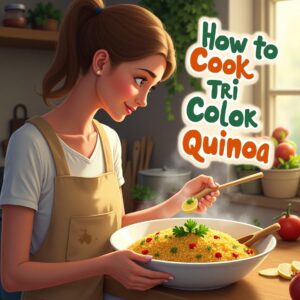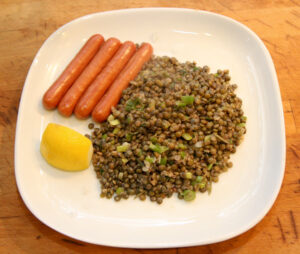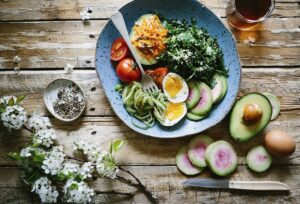How to Cut Recipes in Half: A Comprehensive Guide

Cooking is as much an art as it is a science. Sometimes, you want to cook just enough for one or two people, and the recipe you have makes far too much. This is where knowing how to cut recipes in half becomes an invaluable skill. From adjusting ingredient measurements to tweaking cooking times, here’s everything you need to know about halving recipes successfully.
Why Learn to Cut Recipes in Half?
We’ve all been there: you stumble upon a delicious-looking recipe, but it yields four to six servings. What if you’re cooking for yourself, or just one other person? Making the full recipe can lead to wasted food or a fridge full of leftovers you may not finish. Cutting recipes in half saves money, reduces waste, and makes the cooking process more manageable, especially if you’re trying a dish for the first time.
Key Steps to Halving Recipes
1. Understand the Recipe
Before diving into adjustments, read the recipe thoroughly. Note the ingredients, measurements, cooking times, and any special instructions. Understanding the recipe as a whole helps you identify parts that might not scale evenly, such as cooking times or seasoning proportions.
2. Adjust Ingredients
Cutting ingredients in half seems straightforward, but some require extra care. Here are tips for common types of ingredients:
- Dry Ingredients: Halving flour, sugar, or other dry items is simple. Use a kitchen scale or measuring cups for accuracy. For instance, if the recipe calls for 2 cups of flour, use 1 cup.
- Wet Ingredients: Liquid measurements like milk, water, or oil are equally easy to divide. If the recipe specifies 1 cup of milk, use ½ cup.
- Eggs: Halving eggs can be tricky. If a recipe calls for one egg, whisk it thoroughly and use half the volume. Alternatively, consider using egg substitutes like ¼ cup of unsweetened applesauce or yogurt.
- Spices and Seasonings: Be cautious with strong flavors. Start by using slightly less than half and adjust to taste.
3. Adjust Cooking Times and Temperatures
Cooking smaller quantities often means shorter cooking times. Keep an eye on your dish and use visual cues—like browning, bubbling, or texture—to gauge doneness. For example, a casserole that takes 40 minutes may only need 25-30 minutes when halved.
4. Choose the Right Equipment
Scaling down a recipe might also require smaller cookware. A large baking dish or saucepan can spread the ingredients too thin, affecting cooking times and texture. Opt for smaller pans, bowls, and utensils to ensure even cooking.
5. Taste as You Go
One of the joys of cooking is the ability to customize. Halving recipes gives you more control over the flavors. Taste your dish at various stages to ensure the seasoning is balanced.
Common Challenges and How to Overcome Them
Problem: Halving Eggs Is Difficult
As mentioned earlier, eggs can be a challenge. If the recipe calls for an odd number, consider alternative solutions like egg replacers or using only egg whites or yolks depending on the dish’s requirements.
Problem: Baking Ratios
Baking is a precise science. Halving ingredients like leavening agents (baking powder, baking soda, yeast) can be tricky because they rely on chemical reactions. Measure carefully, and if in doubt, err on the side of slightly less.
Problem: Small Quantities of Liquids
When a recipe requires a teaspoon or tablespoon of liquid, halving it can be difficult without proper tools. Invest in measuring spoons with smaller increments or use a dropper for precision.
Real-Life Example: Halving a Chocolate Chip Cookie Recipe
Let’s say you have a recipe for chocolate chip cookies that yields 24 cookies. You only want 12. Here’s how you’d adjust it:
Original Recipe:
- 2 cups flour
- 1 cup sugar
- 1 cup butter
- 1 tsp baking soda
- 1 tsp vanilla extract
- 2 eggs
- 1 cup chocolate chips
Halved Recipe:
- 1 cup flour
- ½ cup sugar
- ½ cup butter
- ½ tsp baking soda
- ½ tsp vanilla extract
- 1 egg (use methods for halving eggs if necessary)
- ½ cup chocolate chips
Adjust the baking time slightly, and keep an eye on the cookies as they bake. This way, you get just enough for your craving without excess.
Tips for Specific Cooking Scenarios
How to Half a Recipe with Uneven Measurements
For unusual measurements like ⅓ cup or 2⅓ tablespoons, use this guide:
- ⅓ cup becomes 2 tablespoons + 2 teaspoons.
- 2⅓ tablespoons become 1 tablespoon + 1½ teaspoons.
How to Adjust Recipes in Half for Special Diets
If you’re cooking for dietary restrictions, cutting recipes in half can be even trickier. Substitutions like almond flour for regular flour or plant-based milk for dairy may require additional adjustments.
How to Half Recipes for Instant Pots or Slow Cookers
Cooking smaller portions in an Instant Pot or slow cooker requires additional tweaks. Liquid quantities are especially important, as these devices rely on steam or pressure. Make sure there’s enough liquid for the pot to function correctly.
Benefits of Cooking Half a Recipe
- Reduce Food Waste: Smaller portions mean fewer leftovers going uneaten.
- Save Money: You’ll use fewer ingredients, which can stretch your grocery budget further.
- Try New Recipes: Halving lets you experiment without committing to large quantities.
- Healthier Eating: Cooking smaller amounts can help with portion control.
Final Thoughts
Learning how to cut recipes in half is an essential skill for home cooks. Whether you’re cooking for one, trying to reduce waste, or testing out new dishes, this simple practice can make your kitchen adventures more enjoyable and efficient. With a little practice and the tips shared above, you’ll soon master the art of halving recipes like a pro.
FAQs About Cutting Recipes in Half
1. Can you cut every recipe in half?
Most recipes can be halved, but some—like baked goods—require more care. Adjustments may also depend on the type of equipment and cooking method.
2. How do you half a recipe with one egg?
Whisk the egg and measure out half the volume, or use an egg substitute like ¼ cup applesauce.
3. Do you need to adjust cooking times when halving recipes?
Yes, cooking times often decrease when making smaller portions. Monitor your dish closely and use visual cues to ensure proper doneness.
4. How do you cut spices in half without losing flavor?
Start with less than half and adjust gradually. Spices are potent, and using too much can overwhelm the dish.
Share this content:

A seasoned chef with over 10 years of experience in New York. I passionately share my journey and healthy, flavorful recipes online.













Post Comment